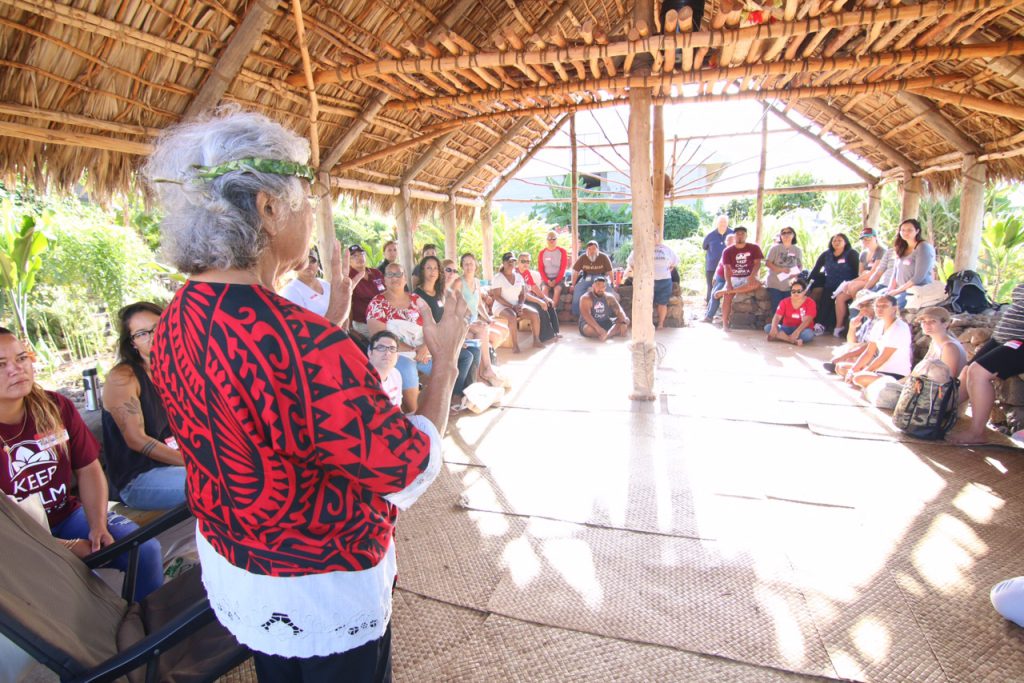
Aunty Lynette Paglinawan addresses participants at Pili ʻĀina day
For UH West Oʻahu instructor David Dinh attending the campus’ annual Pili ʻĀina day was a chance to learn about Hawaiian ways and culture and to use that knowledge in his classes this semester.
Students in his marketing class can expect a lesson about the importance of place, with each working to map out Oʻahu’s six moku (districts) and many ahupuaʻa (land divisions). Students will then be asked where they are from – which moku and ahupuaʻa they call home.
Dinh said the lesson of knowing where you and others come from is a powerful one. “On the marketing side you want to know where your demographic is coming from,” said Dinh. The lesson learned during Pili ʻĀina also will help students become more engaged with each other and relaxed. It also fits with marketing methods. “It will teach them to target market,” he said.
Dinh, a UH West Oʻahu graduate who is returning to teach at his alma mater, was one of more than 50 new and returning faculty and staff who attended Pili ʻĀina on Thursday, Aug. 17. Participants learned of the historic and cultural importance of areas near the campus and within the Honouliuli ahupuaʻa.
The day started at Hale Kūahuokalā, with the chanting of Mele Honouliuli by Piko advisor Puʻu Zablan. A light rain and rainbow appeared as the activities began and just prior to revered kumu Aunty Lynette Paglinawan being introduced to share her insights about Hawaiian ways.
The Pili ʻĀina activities included traveling to significant points within Honouliuli, the largest ahupuaʻa within the ʻEwa moku and on Oʻahu. Traditional moʻolelo (stories) of Honouliuli and ʻEwa were told during various stops between sea level at Kaihuopalaʻai (West Loch) and 3,700-foot elevation at Pālehua. The group also stopped at Puʻu o Kapolei.
One of the goals of Pili ʻĀina is to help faculty and staff understand Hawaiian ways to help their classroom and other work. Among its objectives is fostering connections between the university and the broader community, imbue participants with a strong sense of place and people and show how place and people are fundamental to Hawaiian culture and understanding.
The unique professional experience also has a goal of increasing faculty and staff understanding of culture-based and placed-based pedagogy to assist in the academic achievement, engagement and retention of Native Hawaiians.
Others who attended said the activities will help them teach sense of place, and that it helped to have a shared experience with other faculty and staff to bond and provide a better learning experience for students.
